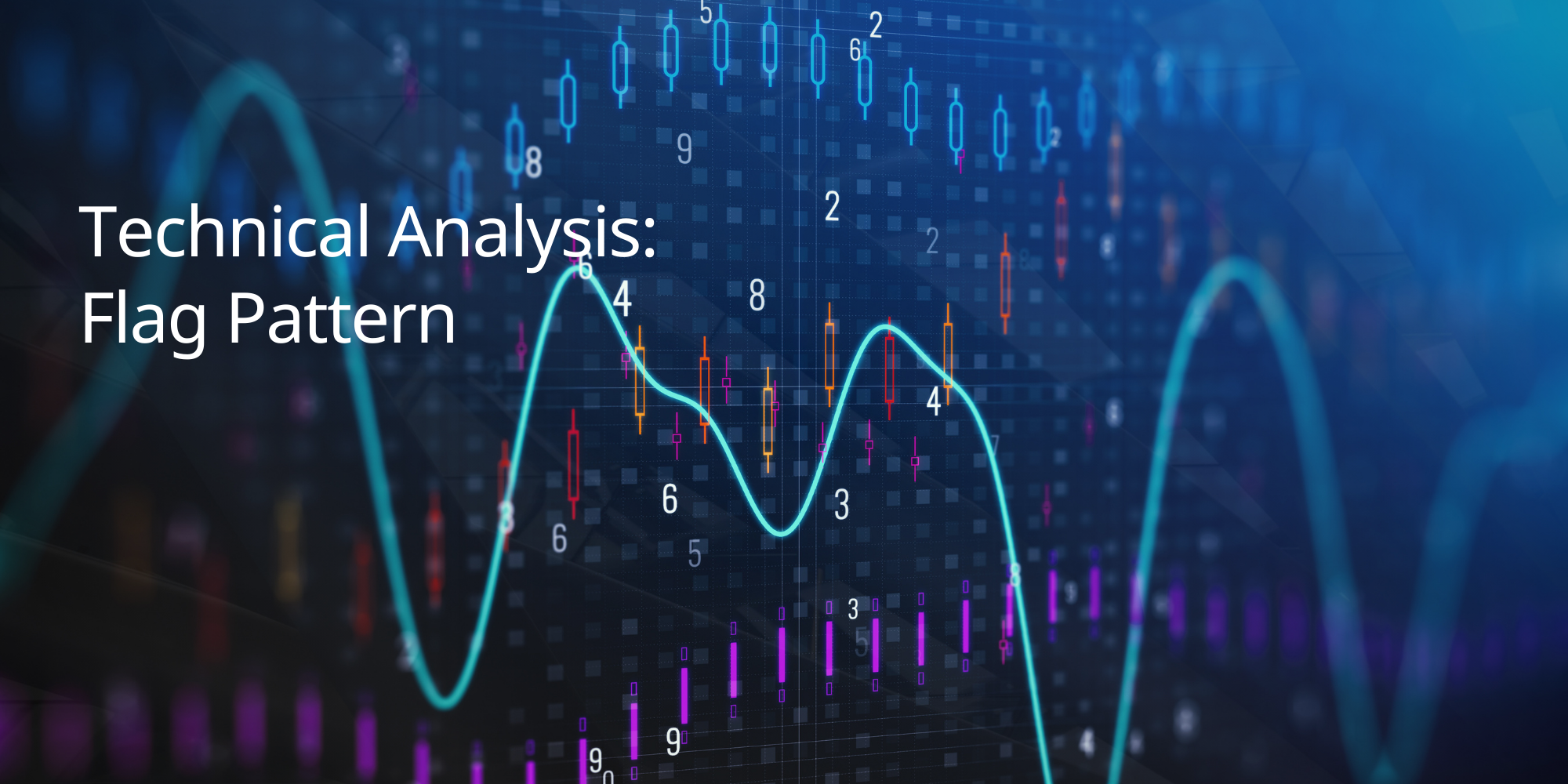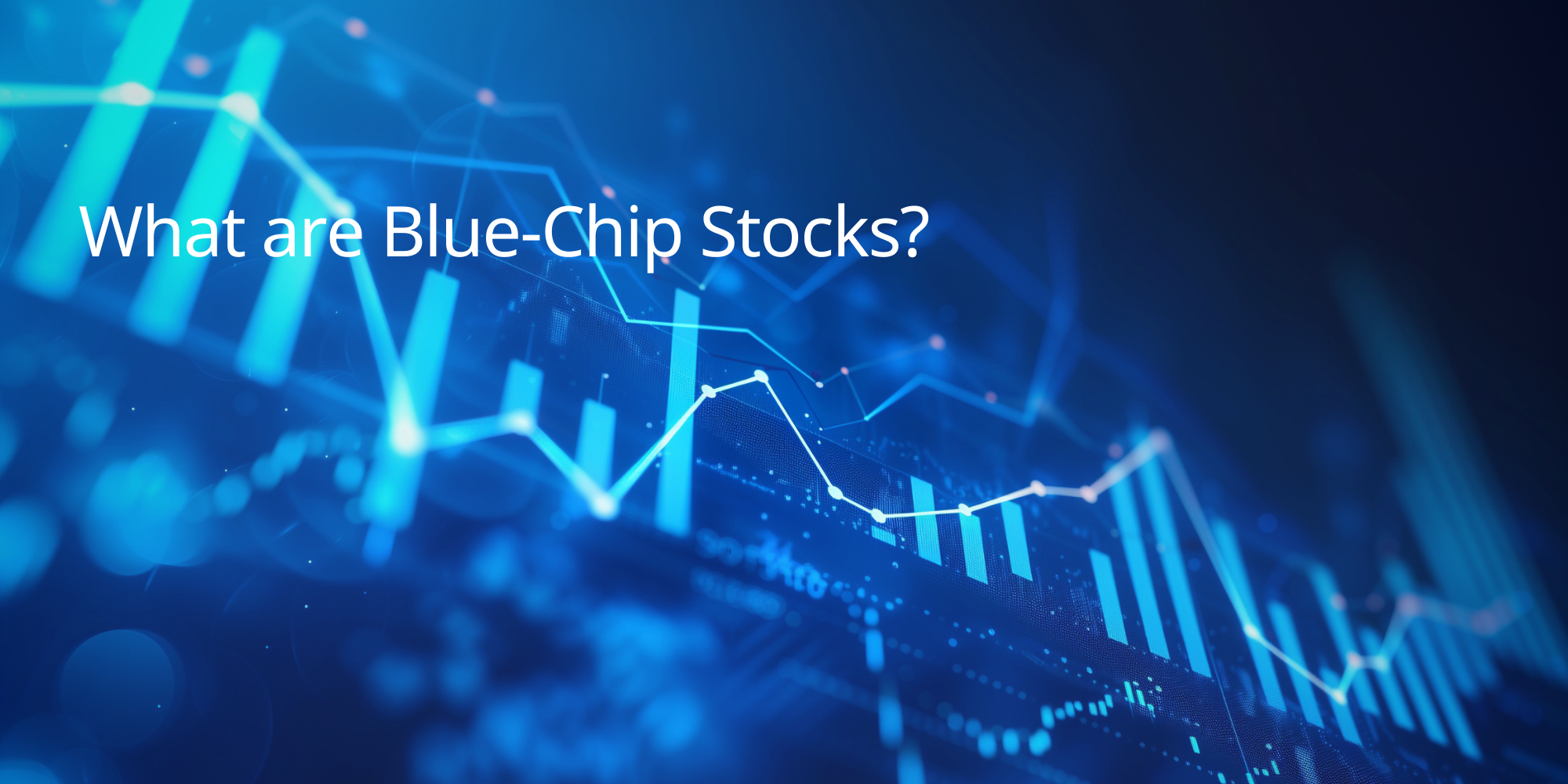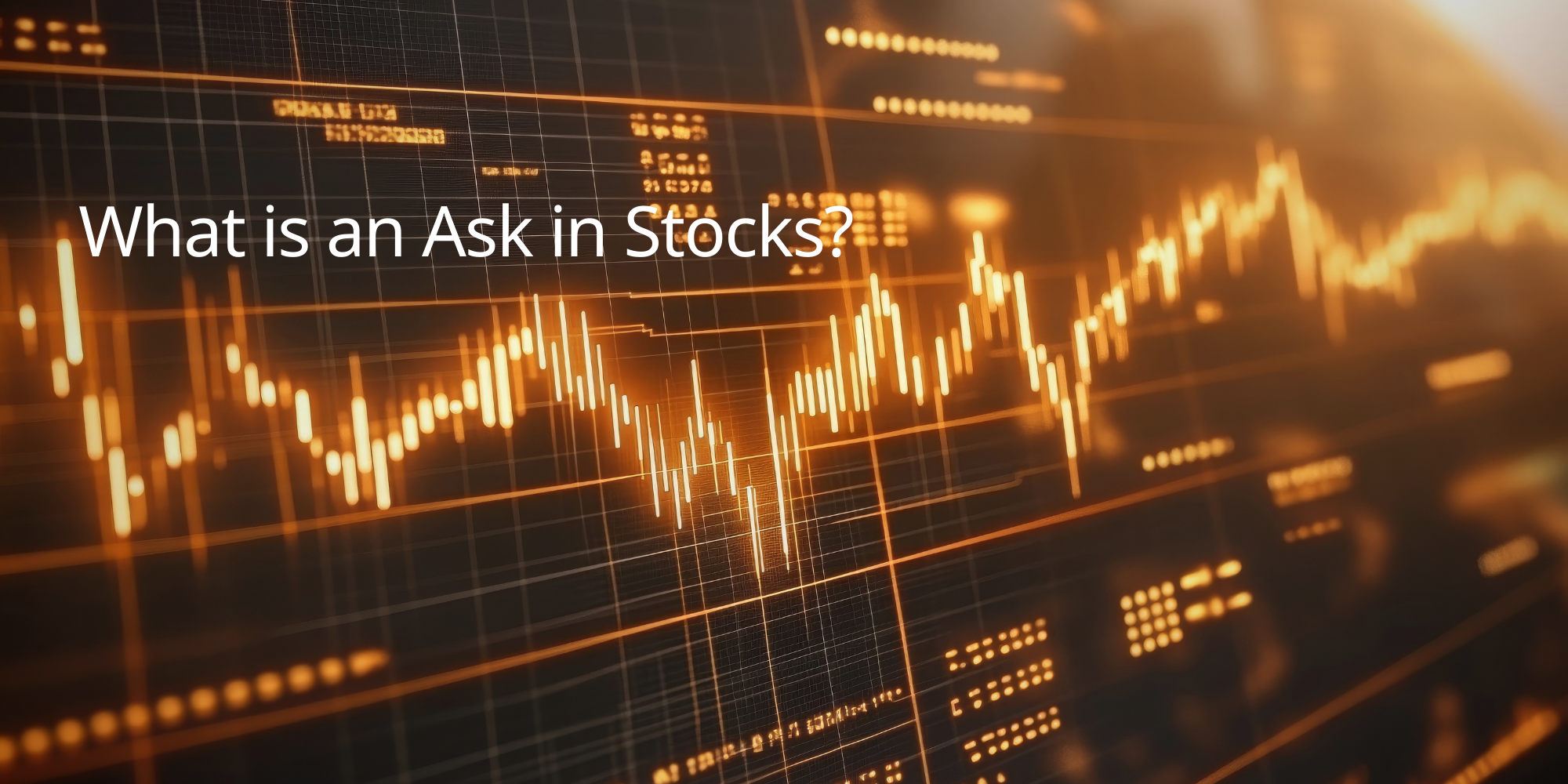Technical Analysis: Flag Pattern – Definition, How it Works, Types, Calculation, and Trading
Flag patterns are popular and reliable chart formations that signal a brief pause in price action before a trend continues. Characterised by a sharp directional move followed by a period of consolidation, flag patterns are often seen during strong bullish or bearish markets.
In this comprehensive guide from TradeSmart, we’ll explore:
- What flag patterns are and how they form
- The key differences between bullish and bearish flag patterns
- How to identify them on a chart and confirm with volume or indicators
- Trading strategies for entering breakouts and managing risk
Whether you’re a breakout trader or trend follower, recognising flag patterns can help you align your trades with the market’s momentum.
What Does a Flag Chart Pattern in Technical Analysis Mean?
A flag pattern is a common chart pattern in technical analysis that signals a potential continuation of a trend. It’s characterized by a sharp price movement (the “flagpole”) followed by a period of consolidation (the “flag”) before the price resumes its original direction.
Why Flag Patterns Matter
Flag patterns can be valuable signals for traders because they:
- Confirm Trend Continuation: They indicate that a strong trend is likely to resume after a brief pause or consolidation.
- Provide Entry Opportunities: Traders might use the breakout from the flag as an entry point to join the trend.
- Signal Potential Targets: The length of the flagpole can sometimes be used to estimate the potential extent of the price move after the breakout.
TradeSmart provides traders with access to advanced charting tools and real-time data to help them identify and analyze flag patterns and other technical indicators. Our educational resources and market insights can help you learn how to use these tools effectively and enhance your trading strategies.
Key Characteristics of a Flag Pattern
A flag pattern is a continuation pattern that signals a potential resumption of a trend after a brief pause. Here are the key characteristics to look for:
- Prior Trend (Flagpole): A sharp, almost vertical price movement precedes the flag formation. This initial move is called the “flagpole” and establishes the direction of the anticipated continuation.
- Consolidation Channel (Flag): After the sharp move, the price enters a period of consolidation, forming a rectangular channel that slopes against the direction of the flagpole. This channel is bound by two parallel trendlines.
- Volume:
- Increasing Volume during Flagpole: The initial price move (flagpole) is usually accompanied by high volume, confirming the strength of the trend.
- Decreasing Volume during Flag: Volume typically decreases during the consolidation phase (flag), indicating a pause in the dominant trend.
- Increasing Volume on Breakout: As the price breaks out of the flag, volume should increase again, confirming the resumption of the trend.
Types of Flag Patterns
Flag patterns can be categorized based on the direction of the trend they signal:
- Bull Flag: This pattern occurs in an uptrend. The flagpole is a sharp upward move, and the flag is a downward-sloping channel. It suggests that the uptrend is likely to resume after the consolidation.
- Bear Flag: This pattern occurs in a downtrend. The flagpole is a sharp downward move, and the flag is an upward-sloping channel. It suggests that the downtrend is likely to resume after the consolidation.
Variations of Flag Patterns
There are also some variations of the basic flag pattern:
- High and Tight Flag: This is a type of bull flag that forms after a very strong and rapid price advance. The flag is typically short and narrow, indicating strong buying pressure and a high probability of continuation.
- Pennant: A pennant is similar to a flag, but the consolidation channel is triangular, with converging trendlines. Pennants can be either bullish or bearish, depending on the direction of the preceding trend.
Identifying Flag Patterns
It’s important to be able to accurately identify flag patterns to take advantage of their trading signals. Look for:
- A clear and strong prior trend (the flagpole).
- A well-defined consolidation channel (the flag) with parallel trendlines.
- Decreasing volume during the consolidation phase and increasing volume on the breakout.
Which Trading Strategies Are the Best For a Flag Pattern?
Flag patterns can provide valuable signals for traders. Here are some common strategies used to trade them:
- Breakout Trading: This strategy involves entering a trade when the price breaks out of the flag in the direction of the prevailing trend.
- Entry: Buy on a breakout above the upper trendline of a bull flag, or sell (or go short) on a breakout below the lower trendline of a bear flag.
- Stop-Loss: Place a stop-loss order just below the lower trendline (for long trades) or above the upper trendline (for short trades).
- Profit Target: The length of the flagpole can sometimes be used to estimate a profit target.
- Pullback Trading: This strategy involves waiting for a pullback to the flag’s trendlines before entering a trade.
- Entry: Buy on a pullback to the lower trendline of a bull flag, or sell (or go short) on a pullback to the upper trendline of a bear flag.
- Stop-Loss: Place a stop-loss order just below the lower trendline (for long trades) or above the upper trendline (for short trades).
- Range Trading: This strategy involves buying near the lower trendline and selling near the upper trendline of the flag, taking advantage of the price oscillations within the consolidation phase.
- Entry: Buy near the lower trendline and sell near the upper trendline.
- Stop-Loss: Place stop-loss orders just outside the trendlines of the flag.
Choosing the Right Strategy
The best strategy for trading flag patterns depends on your trading style, risk tolerance, and market outlook.
- Breakout Trading: This strategy is suitable for traders who want to capitalize on the momentum of a breakout.
- Pullback Trading: This strategy is more conservative and aims to enter trades at more favorable prices.
- Range Trading: This strategy is suitable for traders who are comfortable trading within a range-bound market.
Combining Flag Patterns with Other Indicators
Flag patterns can be powerful signals on their own, but combining them with other technical indicators can provide a more comprehensive view of the market and improve the accuracy of your trading decisions.
Here are some indicators that work well with flag pattern analysis:
- Moving Averages: Moving averages can help confirm the direction and strength of a trend. If a flag pattern forms and the price is above a key moving average (such as the 200-day moving average), it strengthens the bullish signal. Conversely, if the price is below the moving average, it might suggest a bearish bias.
- Relative Strength Index (RSI): The RSI is a momentum oscillator that can help identify overbought and oversold conditions. If a bull flag forms and the RSI is showing oversold conditions, it could be a strong buy signal. Conversely, if a bear flag forms and the RSI is showing overbought conditions, it could be a strong sell signal.
- Bollinger Bands: Bollinger Bands are volatility bands that are placed around a moving average. A breakout from a flag pattern that coincides with a breakout from the Bollinger Bands can be a powerful confirmation signal.
- Volume: Analyzing volume in conjunction with flag patterns can provide further confirmation of the strength of a move. Increasing volume on the breakout from a flag suggests strong conviction behind the price movement.
Example:
Imagine a stock that has been in an uptrend. The price pulls back and forms a bull flag pattern. The price is above the 200-day moving average, and the RSI is showing oversold conditions. This confluence of signals suggests that the uptrend is likely to resume after the breakout from the flag.
Key Takeaway
Combining flag patterns with other indicators can provide a more complete picture of the market and improve the accuracy of your trading decisions. By using multiple tools and analyzing the confluence of signals, you can increase your chances of success in the markets.
Common Mistakes to Avoid When Trading Flag Patterns
While flag patterns can be powerful signals for traders, it’s important to be aware of some common pitfalls to avoid:
- Misidentifying the Pattern: Not all consolidations after a sharp price move are flag patterns. It’s crucial to correctly identify the characteristics of a flag pattern, including the parallel trendlines, the volume pattern, and the preceding trend. Misidentifying the pattern can lead to entering trades based on false signals.
- Poor Timing: Entering a trade too late, after the price has already broken out of the flag, can result in missed opportunities or even losses if the breakout fails. Exiting a trade too early can also limit profits.
- Ignoring Volume: Volume is an important confirmation signal for flag patterns. Increasing volume on the breakout from the flag confirms the strength of the move. Ignoring volume can lead to entering trades based on weak or false breakouts.
- Neglecting Risk Management: Always use appropriate risk management techniques when trading flag patterns, such as stop-loss orders and position sizing. This will help protect your capital and limit potential losses if the trade moves against you.
- Not Considering Market Context: Interpret flag patterns in the context of the overall market environment. Consider factors such as news events, economic data releases, and the broader market trend when making trading decisions.
Conclusion
Flag patterns are powerful tools for traders looking to capitalise on trend continuation. By learning to spot these formations and understanding their context, you can make better-informed entries, set precise targets, and improve your overall trading performance.
TradeSmart equips you with everything you need to trade flag patterns effectively:
- Identify and distinguish flag patterns from similar chart formations
- Confirm potential breakouts using volume and supporting indicators
- Build strategies that align with market momentum
- Use advanced platforms like MT4 and MT5 to analyse price action
Ready to enhance your trading strategy with flag patterns?
- Open a TradeSmart account and access professional trading tools
- Practice your pattern recognition with a risk-free demo account
- Start live trading with just a $50 deposit
Visit TradeSmart.com today and unlock the power of flag pattern analysis in your trading journey.





